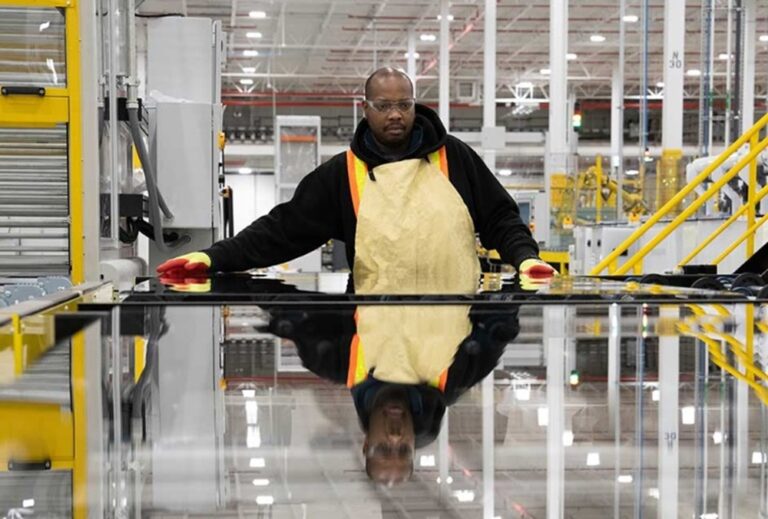The Buildout takes place in the domestic solar -supply chain and at full capacity, planned facilities will produce sufficiently to meet the demand for solar energy in the US, according to the Solar Energy Industries Association.
The production of solar module in the US has grown five-time since the passage of the Inflation reduction Act (IRA), the two-part infrastructure legislation and the Chips Act. The US is now the 3RD The largest producer of the solar module in the world, according to the Solar Energy Industries Association.
SEIA reported that 70 new facilities for solar and storage have come online as a result of federal production stimuli and 47 facilities are under active construction. In general, solar manufacturers have announced $ 36 billion in investments in the US over the past two years, which according to SEIA will create more than 44,000 production paths.
These investments will yield the total planned capacity of solar modules to more than 50 GW, solar cells up to 56 GW, waffles up to 24 GW and ingots up to 13 GW. The growth is also seen further upstream, with the production of solar tracker now more than 80 GW more than 80 GW.
“The US is now the third largest module producer in the world because of these policy actions,” said Seia President and CEO Abigail Ross Hopper. “This milestone not only marks the progress for the solar industry, but reinforces the essential role that energy policy plays in building the domestic production industry in which American employees and their families trust.”
The planned facilities have the capacity to produce sufficiently in the supply chain to meet the demand for solar energy in the US, Seia reported.
This performance comes at a critical moment when rates threaten to increase import costs in the US with a full domestic supply chain, makes the US less dependent on other countries, and also enables solar developers to obtain Domestic contentfor which they would be eligible for a 10% tax credit adder under the IRA.
The production tax credit of the IRA motivated companies such as South Korean Qcells to set up a store in the US, which has raised the American manufactured goods and has provided thousands of jobs.
Qcells said that the “game-changing stimuli” of the Inflation Reduction Act led to the company that has created more than 4,000 production paths, “What is the evidence that the policy of industry in the clean energy industry succeeds.”
In 2020, Seia Set a goal For 50 GW of American solar production capacity in the supply chain by 2030. Five years ago there was only 7 GW of the production capacity of the domestic module, 41 tonnes of polysilicon production capacity and some inverter and racking production.
Jobs comes with domestic production. SEIA reports that recent investments in production facilities will create nearly 49,000 production paths and expects that number more than doubles by 2033.
In addition to planned facilities for solar production, old domestic manufacturers also expand. For example, first solar energy, an American thin film manufacturer has been producing in the US since 1999. The company recently set up an extra facility in AlabamaIt will bring its capacity of up to 11 GW of domestic capacity when it is fully increased. The company has operated three facilities in Ohio and is currently building $ 1.1 billion 3.5 GW factory in Louisiana that is expected to be online next year, after which the company will have more than 14 GW of domestic capacity. The factory in Lawrence County, Alabama, is expected to create more than 800 new production paths.
Access to the interactive map here (shown above) by American manufacturers of solar modules, mounting systems, power electronics and the battery supply chain.
This content is protected by copyright and may not be reused. If you want to work with us and reuse part of our content, please contact: editors@pv-magazine.com.
Popular content



